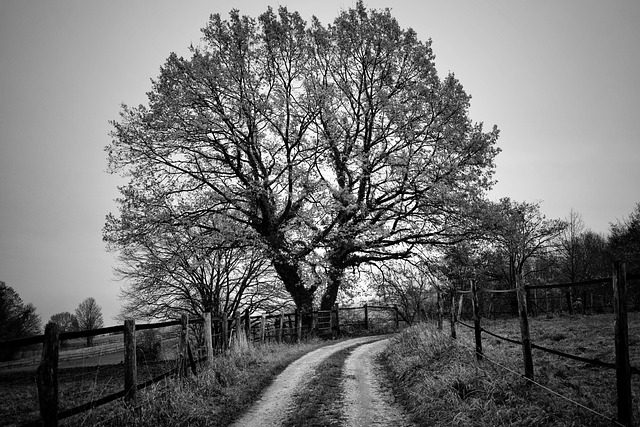In the aftermath of storms, Anderson, SC residents often face the daunting task of assessing and managing damaged trees. This comprehensive guide navigates the critical aspects of emergency tree removal, offering insights on understanding storm damage, identifying safety hazards, and choosing reputable professionals. We explore steps involved in the removal process, emphasize preventive measures to minimize future storm damage, and provide essential SEO keywords: ‘tree removal for storm-damaged trees Anderson SC’.
- Understanding Storm Damage and Its Impact on Trees in Anderson SC
- When Is It Time to Consider Emergency Tree Removal?
- Assessing the Safety Hazards of Storm-Damaged Trees
- Steps Involved in Emergency Tree Removal Process
- Choosing a Reputable Tree Removal Service in Anderson, SC
- Preventive Measures to Minimize Future Storm Damage to Trees
Understanding Storm Damage and Its Impact on Trees in Anderson SC
In Anderson, SC, like many regions susceptible to severe weather events, storm-damaged trees pose significant risks to both property and public safety. Strong winds, heavy rainfall, and lightning strikes can inflict varied types of damage on trees, from deep cracks and broken branches to uprooting entirely. These conditions not only compromise the structural integrity of trees but also create potential hazards that necessitate immediate attention.
When a storm passes through, it’s crucial to assess the health and stability of trees on residential or commercial properties. If a tree shows signs of significant damage, such as large branches hanging precariously, cracks extending through the trunk, or substantial uprooting, emergency tree removal services in Anderson SC should be promptly engaged. Professional arborists are equipped with the necessary tools and expertise to safely remove storm-damaged trees, minimizing risk to personnel and property while ensuring the landscape is restored to a safe condition.
When Is It Time to Consider Emergency Tree Removal?
When a severe storm hits, it can leave behind a trail of destruction, including damaged or dangerously unstable trees. In such cases, emergency tree removal becomes a crucial consideration for Anderson SC residents and business owners. It’s not just about aesthetics; storm-damaged trees can pose significant safety risks to people and property.
Signs that it’s time to consider emergency tree removal include large branches hanging precariously, visible cracks in the trunk or major limbs, or if the tree has bent or broken significantly during the storm. If a tree shows any of these signs, professional assessment is recommended. Prompt action not only ensures the safety of your surroundings but also helps prevent further damage or potential injuries from falling debris.
Assessing the Safety Hazards of Storm-Damaged Trees
After a severe storm, many homeowners in Anderson, SC, find themselves assessing the damage to their property, including their trees. The first step is to identify any safety hazards posed by storm-damaged trees. Fallen branches or uprooting can create significant risks for both people and structures. It’s crucial to stay back from these trees and avoid touching any visible damaged parts due to potential breakage. Professionals in tree removal for storm-damaged trees Anderson SC are trained to recognize these dangers and prioritize the safety of everyone involved.
In assessing a tree, look out for broken branches, split trunks, or exposed roots. These are clear indicators that the tree may be unstable and ready to fall. Moreover, if a tree has come into contact with power lines or is obstructing emergency routes, immediate action should be taken. In such cases, it’s best to call in experts who have the necessary equipment and expertise to safely remove the tree before it causes further damage or injury.
Steps Involved in Emergency Tree Removal Process
When facing storm-damaged trees in Anderson, SC, prompt action is crucial to ensure safety and prevent further damage. The emergency tree removal process involves several critical steps. First, a professional assessment is conducted to determine the severity of the damage. This includes evaluating the tree’s structural integrity and identifying any hazards like loose branches or leaning trunks.
Once the assessment is complete, specialized equipment and techniques are employed for safe tree removal. This might include the use of chain saws, cranes, or rope systems, depending on the situation. Expert arborists ensure that every step adheres to safety protocols and industry standards. After the tree is successfully removed, the area is thoroughly inspected for any remaining debris or potential risks before finalizing the job.
Choosing a Reputable Tree Removal Service in Anderson, SC
When it comes to emergency tree removal for storm-damaged trees in Anderson, SC, selecting a reputable service is paramount. Look for companies that specialize in this critical task, ensuring they possess the necessary equipment and certified professionals to handle fallen or endangered trees safely and efficiently. Reputable services will prioritize customer satisfaction, offering transparent pricing and excellent communication throughout the process.
Checking online reviews and asking for referrals from trusted sources are effective ways to identify Anderson, SC-based tree removal experts. Verifying their licensing and insurance is also crucial to protect your property and ensure the safety of their workers. A reliable tree removal service will demonstrate expertise in navigating challenging situations, providing peace of mind during stressful times when quick action is necessary for storm-damaged trees.
Preventive Measures to Minimize Future Storm Damage to Trees
In the aftermath of a severe storm, many Anderson SC residents turn to emergency tree removal services. However, proactive measures can significantly minimize future storm damage to trees. Regularly trimming weak or dead branches reduces the risk of them falling during high winds, protecting both your property and nearby structures. Additionally, planting resilient tree species suitable for local weather conditions enhances their ability to withstand storms.
Other preventive measures include reinforcing the soil around the tree’s base for stability and ensuring proper spacing between trees to allow wind to pass through without causing excessive strain on any individual plant. Regular inspections by certified arborists can also identify potential issues, enabling timely repairs or adjustments before a storm hits.
